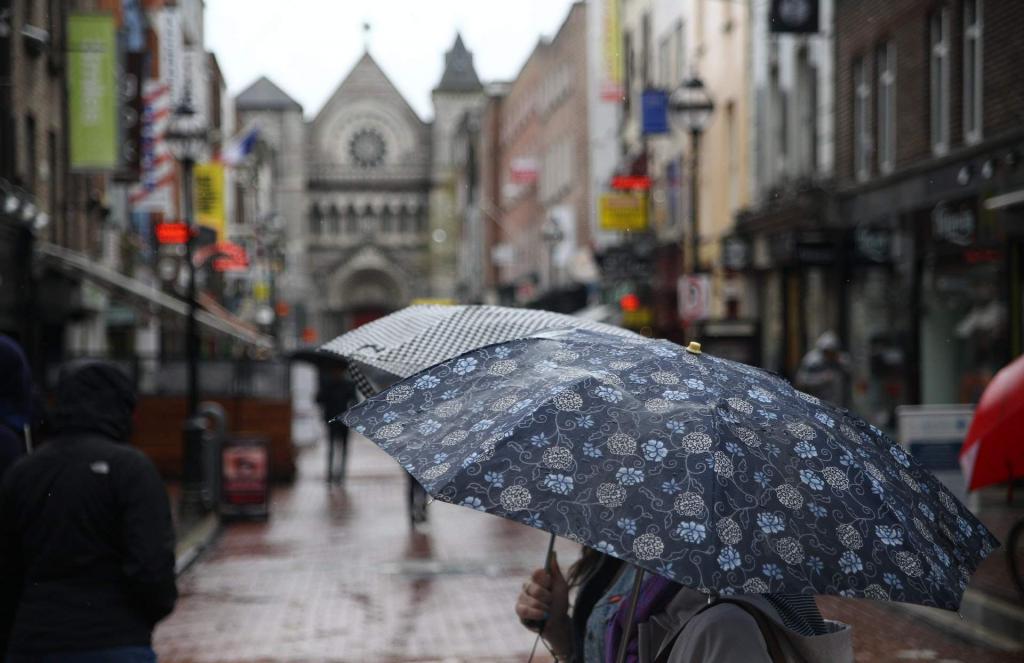Thessaloniki gets ready for its metro launch in November
The underground rapid transit lines have been under construction for almost two decades due to various project delays
 TheMayor.EU logo
TheMayor.EU logo 
The national average for the gender wage gap in Ireland is around 11%, Source: Jaleel Akbash / Unsplash
With the Gender Pay Gap Information Act, companies with more than 250 workers have to publish an annual report on the subject with a unified methodology
On Monday, Irish organizations and firms with more than 250 workers published data on their gender pay gap under the Gender Pay Gap Information Act of 2021. Among them was Dublin City Council, which reported a low 4.83% average and 5.65% median pay gap. Median, in this case, means a comparison between the median male hourly rate (the borderline between the highest and lowest pay for workers on a 50-50 split) and female hourly rate.
Dublin’s local government also reported that it had a predominantly male workforce (more than 70%), both full-time and part-time workers. The report took a ‘snapshot’ of employees’ hourly wages on 18 June 2022.
The 2021 Act is a national law mandating all companies with more than 250 employees to make data on the topic publicly available on their websites. Additionally, companies are also required to publish plans on how to mitigate that difference in the future.
With the Gender Pay Gap reports being a yearly event with a unified methodology across sectors, public authorities and the citizenry can have an accurate and transparent view of companies’ policies and progress.
Even though the Dublin City Council's gap is lower than the Irish national average of around 11% (according to Eurostat from 2019), authorities say that only around 30% of all municipal employees are female.
This figure is largely similar across all wage quintiles, with the exception of the highest-paid group, where women make up only 20.15%. According to the report, this disparity is largely due to the fact that a lot of municipal jobs are occupied by operational roles, where 88% of workers are male. These include craft workers and the Fire Brigade, for example, professions traditionally viewed as male.
To mitigate the gap, the City Council plans on attracting more female workers to traditional male roles, including crafts and the Fire Brigade. Additionally, they also offer social benefits like flexible working and leave options, including carer’s leave, career breaks, paid maternity and adoptive leave, paid paternity leave, parental leave, shorter working year schemes, and work-sharing.
Apart from the city council, other entities like the RTÉ, Ireland’s public broadcaster and An Post, the postal service, reported their gender wage gap. The RTÉ reported a 13.03% median gap, in favour of men, which dropped to 6.79% when positions with overtime were excluded.
Moreover, there was an average gender pay gap of 11.55% which reduces to 10% when roles with overtime are excluded. At the same time, there was a gap of 17% in favour of women among part-time staff.
At the same time, on 30 November, An Post reported a zero gender pay gap for the second year in a row, with female staff increasing from 33% to 41% in just one year. The only significant disparity in the postal service comes in roles for postal sorting, collection and delivery operations staff where 13% are female compared to 87% male.

The underground rapid transit lines have been under construction for almost two decades due to various project delays

Now you can get your wine in Talence by paying directly in Bitcoin

That’s because the state has to spend money on updating the railway infrastructure rather than subsidizing the cost of the popular pass

Rethinking renewable energy sources for the urban landscape

The examples, compiled by Beyond Fossil Fuels, can inform and inspire communities and entrepreneurs that still feel trepidation at the prospect of energy transition

Now you can get your wine in Talence by paying directly in Bitcoin

The 10th European Conference on Sustainable Cities and Towns (ESCT) sets the stage for stronger cooperation between the EU, national and local level to fast track Europe's transition to climate neutrality.

At least, that’s the promise made by the mayor of Paris, Anne Hidalgo

The underground rapid transit lines have been under construction for almost two decades due to various project delays

At least, that’s the promise made by the mayor of Paris, Anne Hidalgo

Hostal de Pinós is located in the geographical centre of the autonomous region

Despite its church-y name, the district has long been known as the hangout spot for the artsy crowds

Urban dwellers across the EU are having a say in making their surroundings friendlier to people and the environment.

Forests in the EU can help green the European construction industry and bolster a continent-wide push for architectural improvements.

Apply by 10 November and do your part for the transformation of European public spaces

An interview with the Mayor of a Polish city that seeks to reinvent itself

An interview with the newly elected ICLEI President and Mayor of Malmö

A conversation with the Mayor of Lisbon about the spirit and dimensions of innovation present in the Portuguese capital














